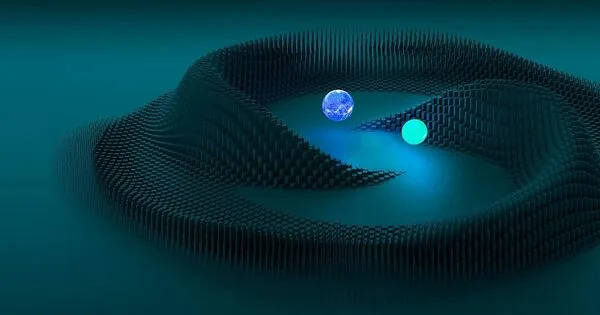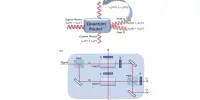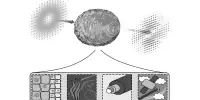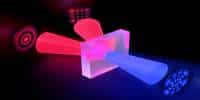ETH Zurich researchers used a new measurement technique to redetermine the gravitational constant G. Although there is still a lot of uncertainty about this value, the new method has a lot of potential for testing one of nature’s most fundamental laws.
The gravitational constant G governs the strength of gravity, which is the force that causes apples to fall to the ground and pulls the Earth in its orbit around the sun. It is a part of Isaac Newton’s law of universal gravitation, which he developed over 300 years ago. The constant cannot be calculated mathematically; it must be determined experimentally.
Scientists have conducted numerous experiments over the centuries to determine the value of G, but the scientific community is not satisfied with the current figure. It is still less precise than all the other fundamental natural constants, such as the speed of light in a vacuum.
Gravity is difficult to quantify in part because it is a weak force that cannot be isolated: when you measure gravity between two bodies, you also measure the effect of all other bodies in the world.
“The only option for resolving this situation is to measure the gravitational constant with as many different methods as possible,” explains Jürg Dual, a professor in the Department of Mechanical and Process Engineering at ETH Zurich. He and his colleagues conducted a new experiment to redetermine the gravitational constant and have now presented their work in the scientific journal Nature Physics.
We still need to reduce this uncertainty significantly in order to obtain a reliable value. We’re already taking measurements with a slightly modified experimental setup in order to determine the constant G with even greater precision. The preliminary results are available but have not yet been published. Dual confirms that we’re on the right track.
Jürg Dual
A novel experiment in an old fortress
Dual’s team set up their measuring equipment in what used to be the Furggels fortress, near Pfäfers above Bad Ragaz, Switzerland, to rule out sources of interference as much as possible. Two beams are suspended in vacuum chambers as part of the experimental setup. After the researchers set one beam vibrating, gravitational coupling caused the second beam to move as well (in the picometre range — i.e., one trillionth of a metre). The team used laser devices to measure the motion of the two beams, and this dynamic effect allowed them to calculate the magnitude of the gravitational constant.
The value obtained by the researchers using this method is 2.2 percent higher than the current official value provided by the Committee on Data for Science and Technology. Dual admits, however, that the new value is fraught with uncertainty: “We still need to reduce this uncertainty significantly in order to obtain a reliable value. We’re already taking measurements with a slightly modified experimental setup in order to determine the constant G with even greater precision. The preliminary results are available but have not yet been published. Nonetheless, Dual confirms that we’re on the right track.”
The researchers run the experiment remotely from Zurich, which minimises disruptions from personnel present on site. The team can view the measurement data in real time whenever they choose.
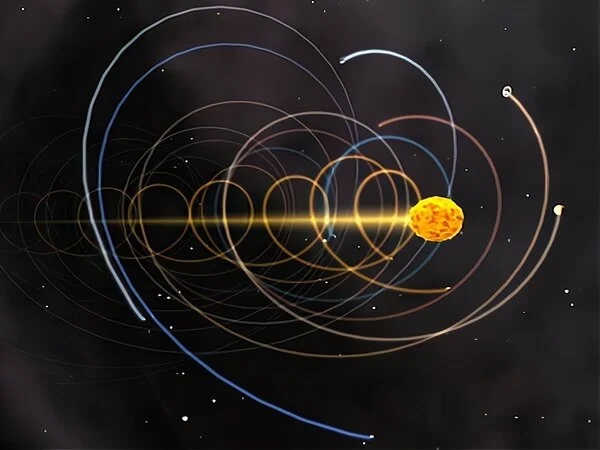
Insight into the history of the universe
The advantage of the new method for Dual is that it measures gravity dynamically via moving beams. “Unlike static measurements, it doesn’t matter that it’s impossible to isolate the gravitational effect of other bodies in dynamic measurements,” he says. That is why he hopes he and his team will be able to use the experiment to help solve the gravity conundrum. Science has yet to fully comprehend this natural force or the experiments that pertain to it.
A better understanding of gravity, for example, would allow us to better interpret gravitational wave signals. Such waves were discovered for the first time in 2015 at the US LIGO observatories. They were the result of two orbiting black holes that had merged at a distance of about 1.3 billion light years from Earth. Since then, scientists have documented dozens of such events; if they could be traced in detail, they would reveal new insights into the universe and its history.
A career-crowning achievement
Dual began working on methods to measure the gravitational constant in 1991, but had to put his work on hold at one point. However, the discovery of gravitational waves at LIGO gave it new life, and he resumed his research in 2018. The project team established the laboratory in the Furggels fortress in 2019 and began new experiments. The project also included infrastructure personnel such as cleanroom specialists, an electrical engineer, and a mechanic, in addition to the scientists from Dual’s group and a statistics professor. “This experiment would not have been possible without years of teamwork,” Dual says. He will retire as a professor emeritus at the end of this year. “A successful experiment would be a nice way to cap off my career,” he says.
